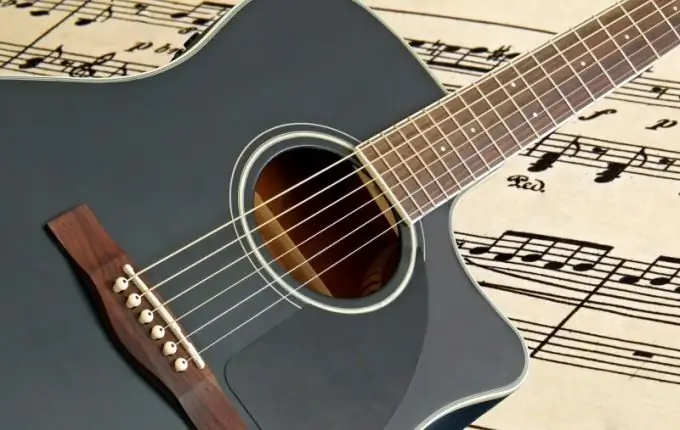When learning songs by a group, a situation often arises when there is a digital or notes, for example, for a guitar, but you need to write a part of a vocal or other instrument. This can be done either manually or with the help of some computer programs.

Help GuitarPro
This popular program is primarily intended for guitarists, but may be useful for other players as well. The mechanism for turning chords into notes is simple enough. Download the song you need in any audio format - for example, in the most popular mp3 among computer users. The program has a converter that can easily turn a recording into a midi file. The program also has a note editor - you will see a melody on five lines right on the screen. If you wish, you can print it right away, but this record has one drawback - it contains only a melody, no chords. To find chords for piano or synthesizer, for example, use the Piano Chord Generator. This method is especially good for creating a monophonic instrument part such as flute or violin.
Manual conversion
To convert chords to sheet music without the use of modern technical tools, you will need:
- elementary knowledge of musical notation;
- the ability to read and write digital codes;
- music book;
- pencil.
It is usually not difficult to find a digital copy of a popular song on the Internet. Most often, digital music is the text of a song with chords written above the text. It is quite easy to determine the tonality from them. The song usually ends in tonic, and major and minor are fairly easy to distinguish by ear.
If you don't know keys well enough, take a chart of scales, chords, and arpeggios and see what key signs are in the key you want. Also determine the size of the piece. It is easy to do this by counting the number of beats between accents. The accent is usually counted as the first beat, regardless of whether the song starts from the beginning of the measure or from the beat. Write the treble clef, key marks and size.
Then proceed as follows. Listen to the song and calculate where the chords change. Write these chords above the staff first, and then transcribe them on the staff itself. You have the foundation. In principle, you can no longer write anything further if the pianist is good enough to improvise. But you can come up with a part for him by repeating the melody or slightly changing it. Since the sounds will be within the same key, there will be no dissonance. On the contrary, in this way you can get an original and very harmonious layout for voices. You can write a part for a button accordion or accordion in the same way as for a piano part.






